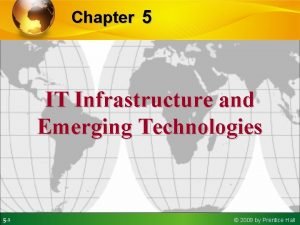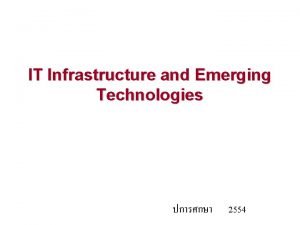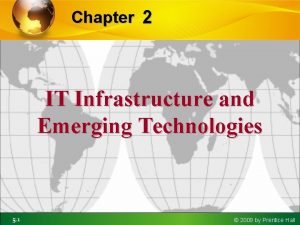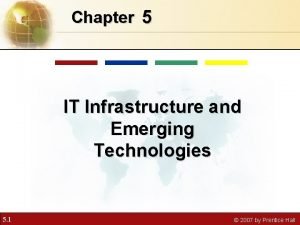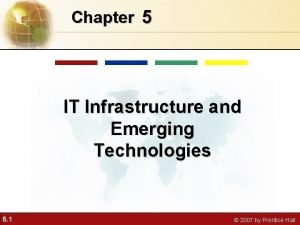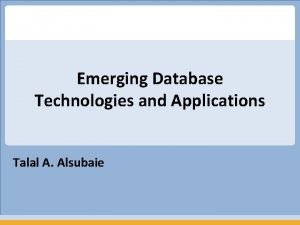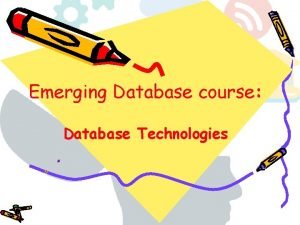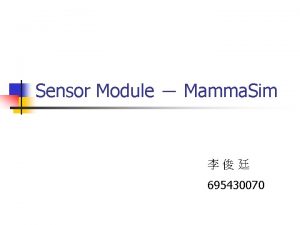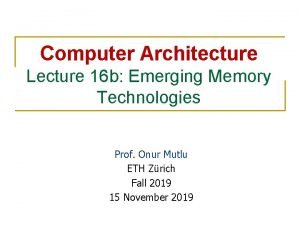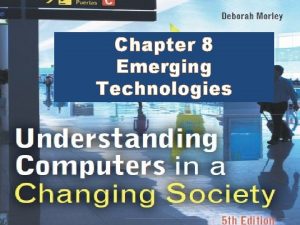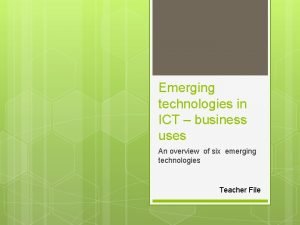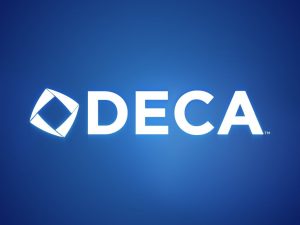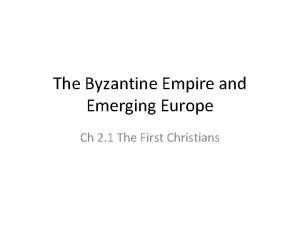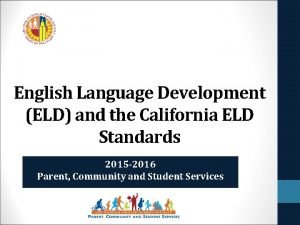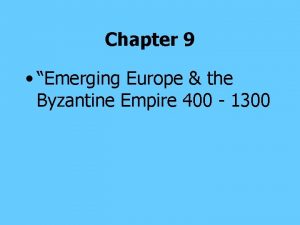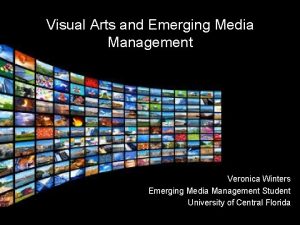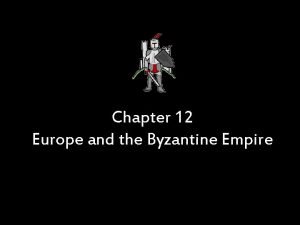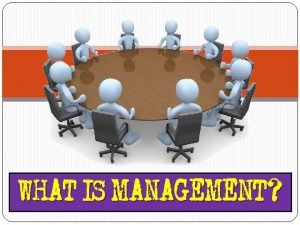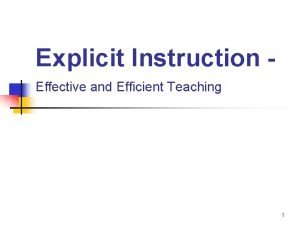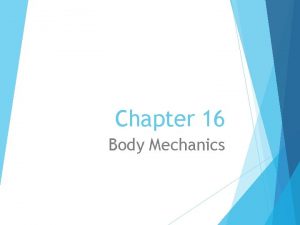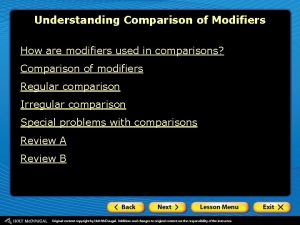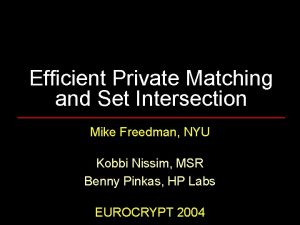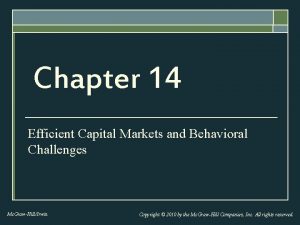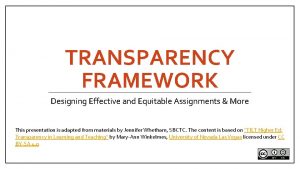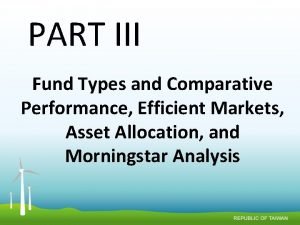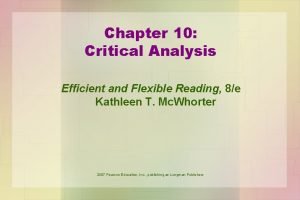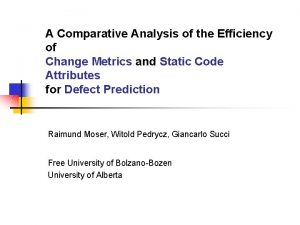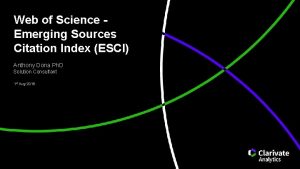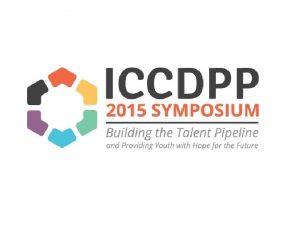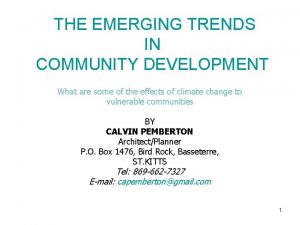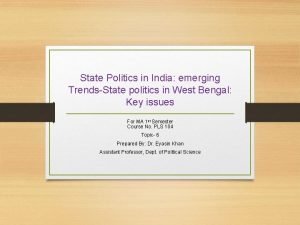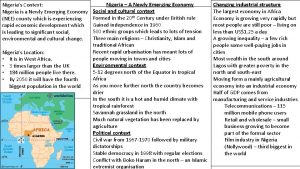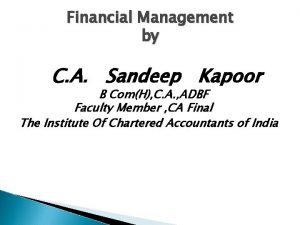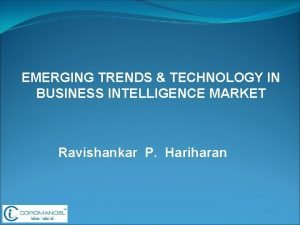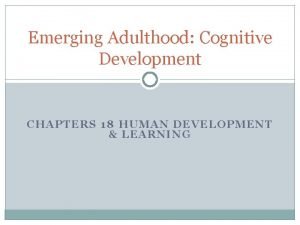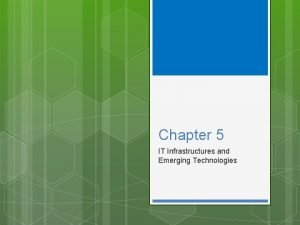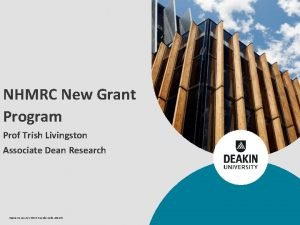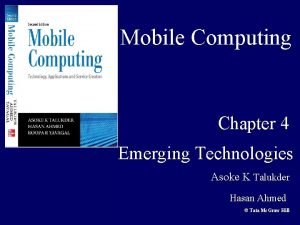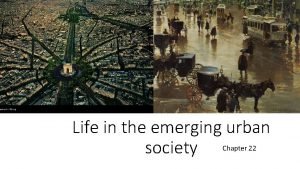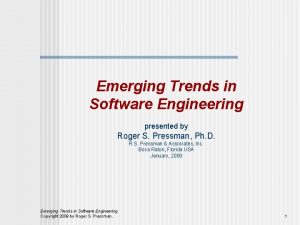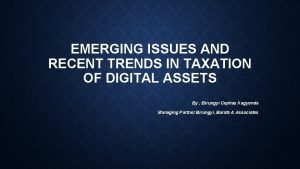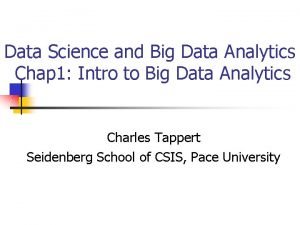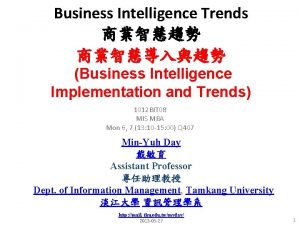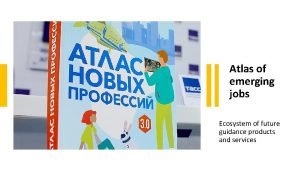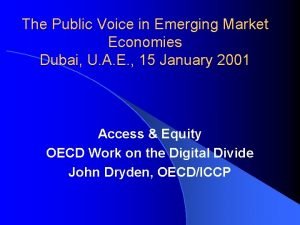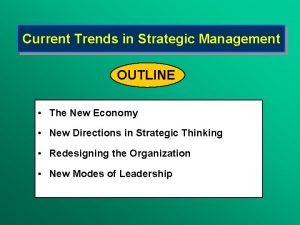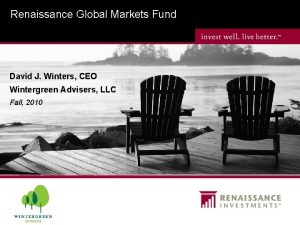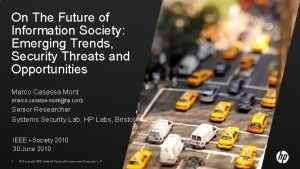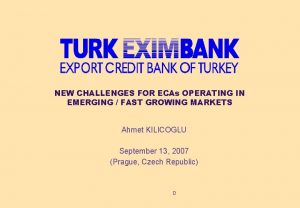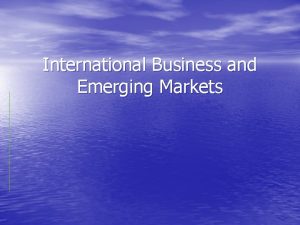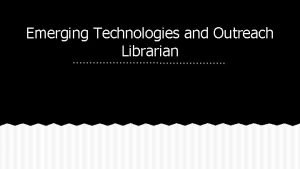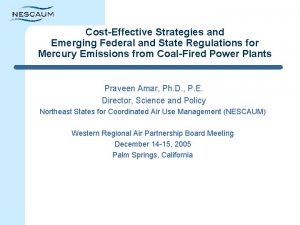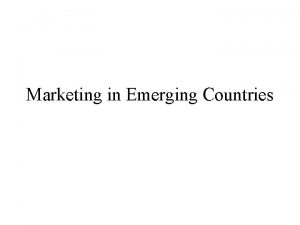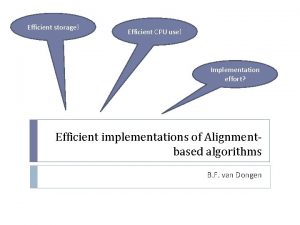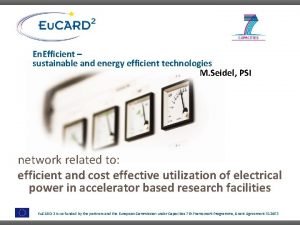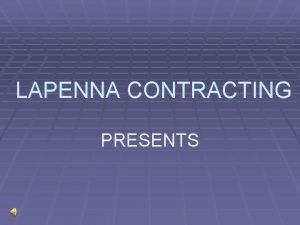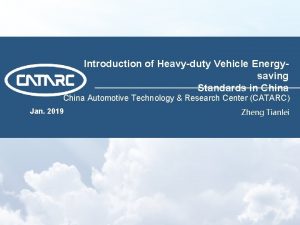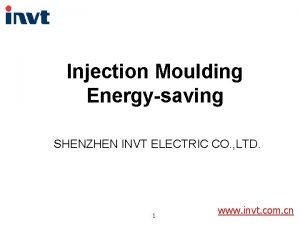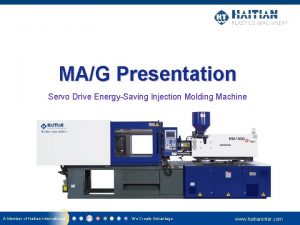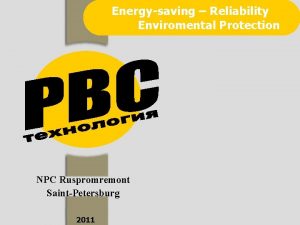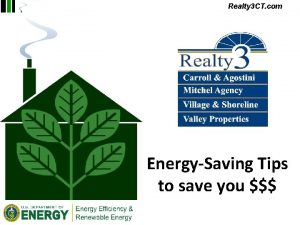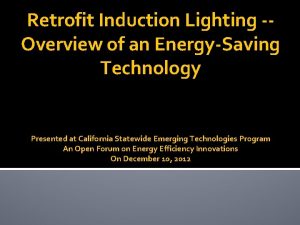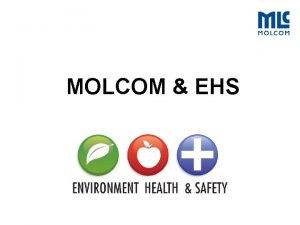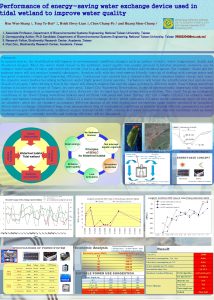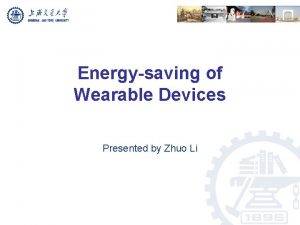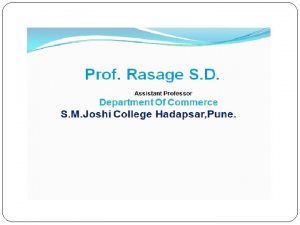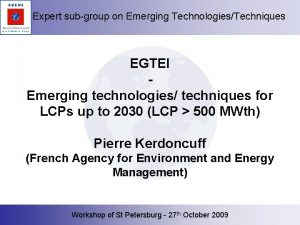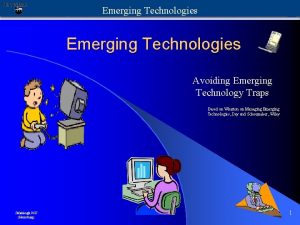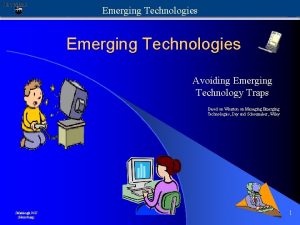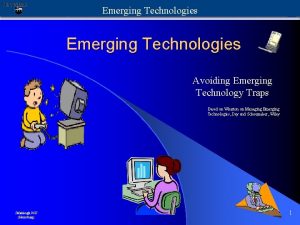IT Infrastructure and Emerging Technologies Costeffective Efficient Energysaving

































































- Slides: 65

IT Infrastructure and Emerging Technologies Cost-effective, Efficient, Energy-saving Computing


• Singapore’s regulatory system for Construction • Building IT infrastructure to streamline construction permits processes – CORENET • COnstruction and Real Estate NETwork – Construction process • Design, tender documentation and selection, construction, and handover and maintenance

– Building plan submission and obtaining approvals and permits • 16 government authorities across eight ministries – Traditional process • • Voluminous paper documents Manual processing Storage space needed Disorganized exchange of project information

– CORENET • e-submission system – – One-stop 24/7 counter for submission Online enquiry of submission status Quicker processing and turnaround Elimination of printing hardcopies » No need to travel to multiple sites for multiple submissions

– Benefits • Cost savings – Printing – Traveling • Better quality – Streamlined process



• • • 5. 1 IT Infrastructure 5. 2 Infrastructure Components 5. 3 Contemporary Hardware Platform Trends 5. 4 Contemporary Software Platform Trends 5. 5 Management Issues

5. 1 IT Infrastructure • The shared technology resources – Provide the platform for the firm’s specific information system applications • Microsoft Operating Systems – Infrastructure • Services or products built on MS operation systems – Word, Powerpoints, Excel, …. – Internet Explorer –. Net

• IT infrastructure – A set of • Physical devices • Software applications – Required to operate the entire enterprise

• IT infrastructure – Set of firmwide services including: • • • Computing platforms providing computing services Telecommunications services Data management services Application software services Physical facilities management services IT management, standards, education, research and development services

• IT infrastructure – “Service platform” perspective is more accurate view of the value of IT investments

• Evolution of IT infrastructure – Five stages – Different configuration of computing power and infrastructure elements.

1. General-Purpose Mainframe and Minicomputer ERA: (1959 – Present) • IBM 360 – Online remote terminals – Centralized mainframe – Proprietary communication protocol Figure 5. 2 eras in IT infrastructure evolution

• Minicomputer – Digital Equipment Corporation (DEC) 1965 » PDP 11, VAX machine » Powerful machines at far low prices » Decentralized computing

2. Personal Computer Era: (1981 to present) • • Xerox Alto, Apple I and II (1970 s) Wintel PC – – – Windows operating software Intel microprocessor Productivity software tools » Word processing, spreadsheets, presentation software Figure 5. 2 eras in IT infrastructure evolution

3. Client/Server Era (1983 to Present) • Clients: Laptop and desktop • Server: Powerful server computers – Stores shared data – Serves Web pages – Managing network activities Figure 5. 2 eras in IT infrastructure evolution

• Network may be two-tiered or multitiered (N-tiered) • Various types of servers (network, application, Web) Figure 5. 3 a multitiered client/server network

4. Enterprise Computing Era (1992 to present) – TCP/IP (1995) • Transmission Control Protocol/ Internet Protocol – Integrate disparate network and applications • Link different types of computer hardware

Figure 5. 2 eras in IT infrastructure evolution

5. Cloud and Mobile Computing Era (2000 to present) • Growing bandwidth power of the Internet • Client/server model – Cloud Computing • Access to a shared pool of computing resources – Computers, storage, applications, services • Accessed on an as-needed basis • IBM, HP, Dell, Amazon – Amazon Elastic Compute Cloud (EC 2) • Software as a Service – Google, Microsoft, SAP, Oracle, Salesforce. com

Figure 5. 2 eras in IT infrastructure evolution

• Technology driver of infrastructure evolution – Moore’s law and Microprocessing power 1. The power of microprocessors doubles every 18 months 2. Computing power doubles every 18 months 3. The price of computing falls by half every 18 months

Figure 5. 4 moore’s law and microprocessor performance

Figure 5. 5 falling cost of chips

• The Law of Mass Digital Storage – The amount of digital information is roughly doubling every year

Figure 5. 7 the amount of storage per dollar rise Exponentially, 1950 -2012

• Metcalfe’s law and network Economics – The value or power of a network Grows exponentially as a function of the number of networked members – cp. 邊際效益遞減

• Declining Communications costs and the Internet – Utilization of communication and computing facilities explodes Figure 5. 8 exponential decline in internet communication costs

• Standards and Network Effects – Proprietary and expensive infrastructure – Technology standards • Ethernet – enabled PCs to connect together in small LAN • TCP/IP – enabled LAN to be connected to Internet – Economies of scale • Decline of computing cost

• • • 5. 1 IT Infrastructure 5. 2 Infrastructure Components 5. 3 Contemporary Hardware Platform Trend 5. 4 Contemporary Software Platform Trend 5. 5 Management Issue

5. 2 Infrastructure Components • IT Infrastructure has 7 main components 1. 2. 3. 4. 5. 6. 7. Computer hardware platforms Operating system platforms Enterprise software applications Data management and storage Networking/telecommunications platforms Internet platforms Consulting system integration services

1. Computer Hardware Platform – Client machines • Intel, AMD microprocessors – Server market • Intel, AMD blade server in rack • Sun SPARC • IBM POWER chips

– Top hardware manufacturer • IBM, HP, Dell, Sun Microsystems – Top chip producers • Intel, AMD, IBM – Mainframe • IBM • Giant server for massive enterprise network and corporate Web sites • Equivalent to thousands of small blade servers

2. Operating System Platform – Server operating systems • Microsoft: 75% • Unix/Linux: 25% – Client operating systems • Microsoft Windows operating systems • Google Chrome OS: lightweight operating system for cloud comp • Android • IOS

3. Enterprise Software Applications – SAP – Oracle – Middleware: BEA • Linking existing systems to Enterprise Applications – Microsoft

4. Data Management and Storage – Leading database software • • • IBM DB 2 Oracle Microsoft SQL Server Sybase My. SQL – Physical data storage • EMC • Storage area networks (SAN) – Connect multiple storage devices on a separate high-speed network

5. Networking/Telecommunications Platform – Local area network operating systems • • Windows Linux and Unix: large wide area networks TCP/IP: wide area network – Leading hardware • • • Cisco Alcatel-Lucent Nortel Juniper Network 華為

6. Internet Platform – Internet hardware server • IBM, Dell, HP/Compaq – Web software applications development tools • Microsoft – MS Expression Web, Share. Point Designer, . NET • Oracle-Sun – Java • Adobe

7. Consulting and System Integration Service • Even a large firm – Does not have the staff, the skills, the budget, and the necessary experience – To deploy and maintain its entire IT infrastructure – Leading consulting firm • Accenture, IBM Global Service, HP Enterprise Service, Infosys, Wipro Technology – Software Integration • Ensuring legacy systems works with new Infrastructure

• • • 5. 1 IT Infrastructure 5. 2 Infrastructure Components 5. 3 Contemporary Hardware Platform Trend 5. 4 Contemporary Software Platform Trend 5. 5 Management Issue

5. 3 Contemporary Hardware Trend 1. 2. 3. 4. 5. 6. 7. 8. Mobile digital platform Consumerization of IT & BYOD Grid computing Virtualization Cloud computing Green computing High performance/power-saving processors Autonomic computing

1. The Mobile digital platform – Smartphones • Have assumed data transmission, Web surfing, e-mail and IM duties – Netbooks: • Small, low-cost lightweight notebooks optimized for wireless communication and core computing tasks – Tablets (i. Pad) – Networked e-readers (Kindle)

2. Consumerization of IT & BYOD – first emerges in the consumer market – spread into business organization (bring your own device) – IT department lose control of hardware & software • Network security • Right to access

3. Grid computing – Connects geographically remote computers into a single network to combine processing power and create virtual supercomputer – Provides cost savings, speed, agility 4. Virtualization – Allows single physical resource to act as multiple resources (i. e. , run multiple instances of OS) – Reduces hardware and power expenditures – Facilitates hardware centralization

5. Cloud computing – On-demand (utility) computing services obtained over network • Infrastructure as a service • Platform as a service • Software as a service – Cloud can be public or private – Allows companies to minimize IT investments – Drawbacks: Concerns of security, reliability

6. Green computing – Practices and technologies for manufacturing, using, disposing of computing and networking hardware – Reducing computer power consumption 7. Autonomic computing – Industry-wide effort to develop systems • that can configure, heal themselves • when broken, and protect themselves from outside intruders – self-updating antivirus software; • Apple and Microsoft both use automatic updates

8. High performance, power-saving processors – Multi-core processors • Simultaneous processing of multiple tasks • Reduced power consumption – Highly power-efficient microprocessor • ARM (Advanced RISC Machine) • Apple’s A 4 • Intel’s Atom

• • • 5. 1 IT Infrastructure 5. 2 Infrastructure Components 5. 3 Contemporary Hardware Platform Trend 5. 4 Contemporary Software Platform Trend 5. 5 Management Issue

5. 4 Contemporary Software Trend • Linux and open-source software – Open-source software: Produced by community of programmers, free and modifiable by user – Linux: Open-source software OS • Software for the Web – Java: • Object-oriented programming language • Operating system, processor-independent – Ajax • Asynchronous Java. Script and XML • Allows client and server to exchange small pieces of data without requiring the page to be reloaded


• HTML & HTML 5 – Hypertext Markup Language • Specify how text, graphics, … are placed • Create dynamic links – Require third party plug-in for rich media • Apple drop support for Flash – HTML 5 • Embed rich media directly into the webpages

• Web services & Service-oriented architecture – Web Services • Software components that exchange information using Web standards and languages • XML: Extensible Markup Language – More powerful and flexible than HTML – Tagging allows computers to process data automatically Table 5. 2 example of XML

– SOA: Service-oriented architecture • Set of self-contained services that communicate with each other to create a working software application • Software developers reuse these services in other combinations to assemble other applications as needed – Example: an “invoice service” to serve whole firm for calculating and sending printed invoices • Dollar Rent A Car – Uses Web services to link online booking system with Southwest Airlines’ Web site

Figure 5. 11 how dollar rent a car use web service

• Software outsourcing and cloud services – Three external sources for software: 1. Software packages and enterprise software 2. Software outsourcing (domestic or offshore) – Domestic: » Primarily for middleware, integration services, software support – Offshore: » Primarily for lower level maintenance, data entry, call centers, although outsourcing for new-program development is increasing

• Three external sources for software (cont. ) 3. Cloud-based software services • Software as a service (Saa. S) • Accessed with Web browser over Internet • Ranges from free or low-cost services for individuals to business and enterprise software • Users pay on subscription or per-transaction – e. g. Salesforce. com • Service Level Agreements (SLAs): formal agreement with service providers

Figure 5. 12 changing sources of firm software

• Software outsourcing and cloud services (cont. ) – Mashups • Combinations of two or more online applications, such as combining mapping software (Google Maps) with local content – Apps • Small pieces of software that run on the Internet, on your computer, or on your cell phone – i. Phone, Black. Berry, Android • Generally delivered over the Internet

• • • 5. 1 IT Infrastructure 5. 2 Infrastructure Components 5. 3 Contemporary Hardware Platform Trend 5. 4 Contemporary Software Platform Trend 5. 5 Management Issue

• Dealing with platform and infrastructure change • As firms shrink or grow, IT needs to be flexible and scalable – Scalability: • Ability to expand to serve larger numbers of users – Flexibility • Mobile computing and cloud computing – New policies and procedures for managing these new platforms – Contractual agreements with firms running clouds and distributing software required

• Management and governance – Who controls IT infrastructure? – How should IT department be organized? • Centralized – Central IT department makes decisions • Decentralized – Business unit IT departments make own decisions – How are costs allocated between divisions, departments?

• Making wise infrastructure investments – Amount to spend on IT is complex question • Rent vs. buy, outsourcing – Total cost of ownership (TCO) model • Analyzes direct and indirect costs • Hardware, software account for only about 20% of TCO • Other costs: – Installation, training, support, maintenance, infrastructure, downtime, space and energy • TCO can be reduced – through use of cloud services, greater centralization and standardization of hardware and software resources

• Competitive forces model for IT infrastructure investment 1. 2. 3. 4. 5. 6. Market demand for firm’s services Firm’s business strategy Firm’s IT strategy, infrastructure, and cost Information technology assessment Competitor firm services Competitor firm IT infrastructure investments
 Emerging technology chapter 5
Emerging technology chapter 5 It infrastructure and emerging technologies
It infrastructure and emerging technologies It infrastructure and emerging technologies
It infrastructure and emerging technologies Chapter 5 it infrastructure and emerging technologies
Chapter 5 it infrastructure and emerging technologies Computer hardware platforms in it infrastructure
Computer hardware platforms in it infrastructure Emerging database technologies and applications
Emerging database technologies and applications Emerging database technologies
Emerging database technologies Productively efficient vs allocatively efficient
Productively efficient vs allocatively efficient Productively efficient vs allocatively efficient
Productively efficient vs allocatively efficient Productively efficient vs allocatively efficient
Productively efficient vs allocatively efficient Allocative efficiency vs productive efficiency
Allocative efficiency vs productive efficiency Productive inefficiency and allocative inefficiency
Productive inefficiency and allocative inefficiency Emerging technologies introduction
Emerging technologies introduction Memory technology in computer architecture
Memory technology in computer architecture Artificial intelligence devices
Artificial intelligence devices Emerging technologies in ict
Emerging technologies in ict Deca mission statement
Deca mission statement The byzantine empire and emerging europe
The byzantine empire and emerging europe Eld emerging expanding bridging
Eld emerging expanding bridging Byzantine empire 1300
Byzantine empire 1300 Jeffrey arnett emerging adulthood theory
Jeffrey arnett emerging adulthood theory Emerging media definition
Emerging media definition The byzantine empire and emerging europe
The byzantine empire and emerging europe It is an arrangement of people in organization
It is an arrangement of people in organization Explicit instruction effective and efficient teaching
Explicit instruction effective and efficient teaching Using the body in an efficient and careful way
Using the body in an efficient and careful way Double comparisons
Double comparisons Efficient private matching and set intersection
Efficient private matching and set intersection Efficient capital markets and behavioral challenges
Efficient capital markets and behavioral challenges Efficient and equitable taxation
Efficient and equitable taxation Assignment title examples
Assignment title examples Efficient comparative and superlative
Efficient comparative and superlative Efficient and flexible reading
Efficient and flexible reading Efficient comparative and superlative
Efficient comparative and superlative Web of science emerging sources citation index
Web of science emerging sources citation index Emerging technology synthesis
Emerging technology synthesis Trends in community development
Trends in community development Explain emerging patterns of state politics in india
Explain emerging patterns of state politics in india Psychosocial development in young adulthood
Psychosocial development in young adulthood Emerging proficient extending
Emerging proficient extending Is nigeria a newly emerging economy
Is nigeria a newly emerging economy Jeffrey arnett emerging adulthood theory
Jeffrey arnett emerging adulthood theory Emerging role of financial manager in india
Emerging role of financial manager in india Emerging trends meaning
Emerging trends meaning Emerging challenges of industrial relations in india
Emerging challenges of industrial relations in india Emerging adulthood cognitive development
Emerging adulthood cognitive development Emerging technology chapter 5
Emerging technology chapter 5 Art in emerging europe
Art in emerging europe Jeffrey arnett emerging adulthood theory
Jeffrey arnett emerging adulthood theory Nhmrc emerging leadership fellow
Nhmrc emerging leadership fellow Emerging technology chapter 4
Emerging technology chapter 4 Chapter 22 life in the emerging urban society
Chapter 22 life in the emerging urban society Emerging trends in software engineering ppt
Emerging trends in software engineering ppt Emerging issues in taxation
Emerging issues in taxation Emerging big data ecosystem
Emerging big data ecosystem Emerging trends in business intelligence implementation
Emerging trends in business intelligence implementation Atlas of emerging jobs
Atlas of emerging jobs Dubai emerging market
Dubai emerging market Grundwasserreinigung emerging contaminants
Grundwasserreinigung emerging contaminants Emerging trends in strategic management
Emerging trends in strategic management World heart federation emerging leaders
World heart federation emerging leaders Swinburne emerging leader
Swinburne emerging leader Renaissance emerging markets fund
Renaissance emerging markets fund Emerging trends in society
Emerging trends in society Challenges of emerging trends in operating systems
Challenges of emerging trends in operating systems Challenges of international business in emerging markets
Challenges of international business in emerging markets
